Rodent Control Singapore – We Exterminate Rodents (Rat and Mouse)
How to get rid of mice and rats in Singapore through Pesticon’s vermin exterminator team?


Pesticon’s rodent control service and rodent management: For us, rodent eradication is more than just using rodent bait, rodent poison and deploying rodent traps. Total rodent elimination requires methodical planning, advanced pest control products and relentless execution. Our vector control process for rodent problem, begins with our elaborate pest inspection services. Meticulous groundwork will be conducted, to determine the type of rodent treatment needed. Different types of rodents, need different hierarchical rodent control measures, and adaptive rodent control methods that vary.
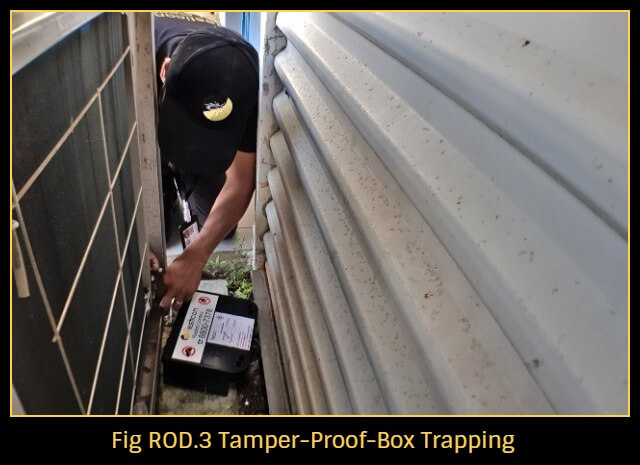

Rat infestation Singapore
For the most part, rat extermination process is not as straightforward as, laying the best rat bait or installing the best rat trap. Intimate knowledge of the rats’ behaviour is very important. Rats are generally suspicious by nature and usually require pre-baiting before setting any rat traps. There are many ways to get rid of rats, and any rat infestation solution, should never be a one size fits all blanket approach.
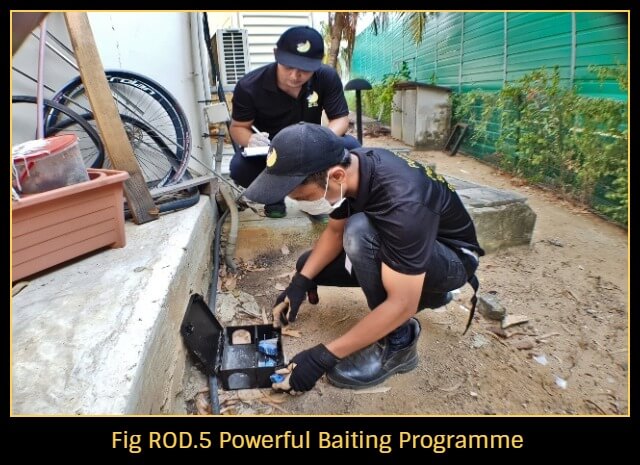
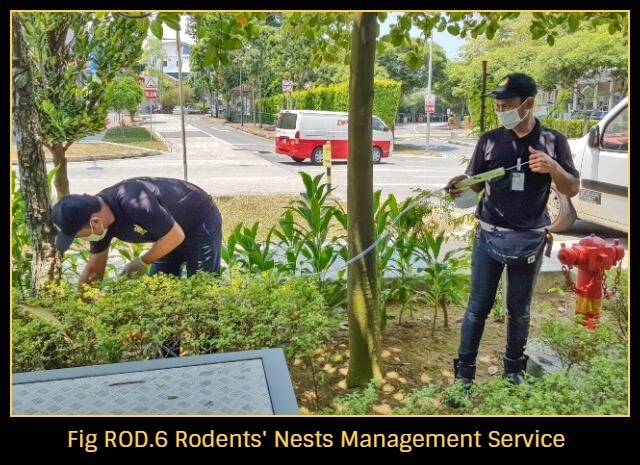
Rat pest control Singapore
For any solitary incident of rat in house situation, urgent rat removal service is the key. A generous amount of rat glue traps, will be laid at the runways of the rat. Toxic rat control products will not be used, as rat poison is seldom the best way to get rid of rats in roof. If the rat dies in an inaccessible part of the roof, you will be helpless against the stench from the rotting carcass of the poisoned rat. Incidentally, If you are getting frequent visits from rats, despite your sound housekeeping, rat prevention may just be your solution and rat proofing should be carried out. Be it a single rat hole or multiple rat burrows, they should be sealed with appropriate rodent proofing materials. For commercial premises (e.g. restaurants) with recurring or heavy rat infestation, an intensive containment rat control program, with increased frequency of rat service should be implemented.
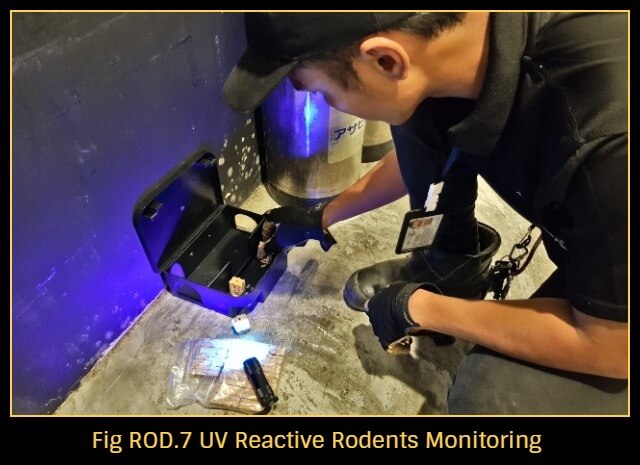
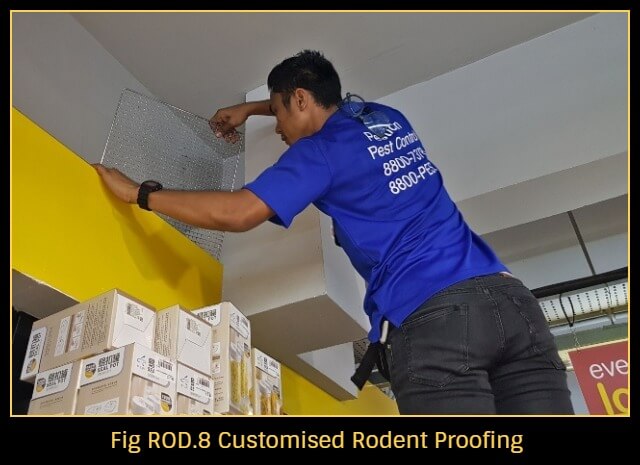
Mouse pest control Singapore
Contrary to rat infestation, most mouse infestation and mouse problems, are commonly limited to the mouse in the house scenario. Since mice are generally inquisitive with a strong tendency to investigate new objects in their environment, specialised mouse trap bait is seldom required. Mice are just as easily trapped with or without baits. As a result of that, we seldom encounter uncontrollable mice infestation. Disregarding the comparative ease in trapping mice, any mouse trap or snap trap, will still be thoughtfully installed, at prime sites to expedite all processes to get rid of mice. Mice prevention generally has the same set of considerations, as rats prevention. However, since mice are physically smaller than rats, we use wire meshes with smaller openings. By the same token, some mice and rat traps (e.g. mouse cage or rat cage) that we use, have different physical attributes and sensitivity.
Effective pest control for vermin control
Regardless of whether you are having a mouse or rat problem, we can help. Our range of rodent pest control services include, establishing the rodents’ usual routes, possible hideouts and entry points. Trapping them with mouse and rat traps and also the disposal of any trapped rodents and their carcasses. If you are looking for excellent pest control to get rid of rodents, call Pesticon at 8800-7378 (8800-PEST) for a non-obligatory discussion.
Home pest infestation (Health concerns and property damages)
Rodents are a group of mammals characterized by their need to gnaw. Rodents use their incisors to protect themselves, dig burrows and to chew their food. They are so vastly distributed that, you can find them on every continent, except for Antarctica. There are approximately 1500 species of rodents in the world. However, in our local context, when we mention rodents, we are really referring to the 4 main species, which are notorious vectors as well. They are the Norway Rat, Roof Rat, Little Mouse Rat & House Mouse. These rodents are generally highly active nocturnal creatures. Some rodents can swim approximately 400m to 800m in the open sea (8-16 laps in the Olympic sized pool), tread water for 70 hours, dive 30m underwater, jump 70cm vertically, leap 1.2m horizontally and squeeze through a 6mm door gap. Rodents have ever-growing teeth (throughout their life) and an insatiable habit of gnawing, to keep those teeth in check. They are capable of chewing through masonry hollow blocks, lead and aluminium sheets. Rodents are prolific breeders, giving rise to staggering numbers in a year. A pair of breeding mice if left unchecked, could in theory, produce a colony of more than 15,000 mice in a year. With their athletic abilities, mouthing habits (gnawing constantly), frequent defecation (40-100/day) and unhygienic nature, rodents are vectors that you do not want to be providing harbourage for.
Health risks: Haemorrhagic Fever with renal syndrome, Rat-bite Fever, Lymphocytic Choriomeningitis, Leptospirosis, Murine Typhus, Pneumonic, Septicaemic, and Bubonic Plagues and many more.
Property damages: Fire caused by short-circuited wires chewed by rodents, long lasting musky odour in rodent-infested habitats, chewing & defecation damage on warehouse inventory (electrical board, packages food etc.) and many more.
4 common species of rodents in Singapore
Norway Rat Singapore
The Norway Rat is commonly known in Singapore, as the Brown Rat or the Sewer Rat. This species of rat goes by the scientific name of Rattus Norvegicus. This terrestrial rat is greyish brown in colour and when fully grown, measures approximately 26cm. The Norway Rat has a blunt muzzle, heavy set body and a tail shorter than, the length of its head and body combined. Its ears are small, closely set and appear half covered by fur. The Norway Rat is the largest among all common types of rats in Singapore, and generally more aggressive than the Roof Rat.
Roof Rat Singapore
The Roof Rat aka the Black Rat (Rattus Rattus), is an arboreal species of rats which excel in climbing. Physically, the Roof Rat differs from the Norway Rat. The Roof Rat has a pointed muzzle, a slimmer body and a tail longer than, the length of its head and body combined. Since the Roof Rat is an adept climber, the longer tail probably acts as a balancing aid, to cross pipes and wires. Although commonly referred to as the Black Rat, the Roof Rat is not exactly jet black in colour. It generally sports a darker shade of greyish-brown with some black mixed in.
Little Mouse Rat Singapore
The Little Mouse Rat (Rattus Exulans) is also commonly referred to, as the Little Rat or the Polynesian Rat. It’s likely to have inherited its common name based on its physical size. It’s the smallest in size among rat’s species, commonly associated with humans. Just like the Norway Rat & the Roof Rat, it is greyish brown in colour. Apart from its smaller build, the distinguishing dark bar, on the hind legs of the Little Mouse Rat, helps to differentiate it, from the rest. It’s interesting to note, although smaller than its cousins and therefore being lighter, it’s a comparatively poor swimmer.
House Mouse Singapore
The House Mouse which goes by the scientific name of Mus Musculus, is the only mouse species, that is regularly tagged to other rats as known vectors. Among the common rodents who are frequently associated with humans, the House Mouse is the smallest. The body weight of an adult mouse seldom exceeds 30g. Despite its small size, its appetite is not that small. The House Mouse can nibble on food for most of its waking hours. It can consume the equivalent of 10-15% of their body weight and defecate 40-100 faecal pellets a day.
8 fun facts about rodents
-
They are all around
Just because you don’t see it, doesn’t mean it’s not there. Rodents account for more than 40% of all mammal species in the world, and approximately 95% of lab test subjects, are rodents. -
Rodents can’t vomit
Their long oesophagus coupled with not so muscular diaphragms, makes vomiting impossible for rodents. -
Inborn aversion
Do you know that mice don’t have to see or learn about cats to fear them? Even a lab mouse which has been inbred for generations avoids a cat naturally. When its vomeronasal organ picks up a predator scent compound, the mouse will take evasive actions instinctively. -
Peer pressure
If you think that only humans have peer pressure, you are mistaken. Even rodents succumb to peer pressure! It might sound strange, but it is true and interesting at the same time. Scientists have discovered that rodents, have a tendency to follow the behaviour of fellow rodents, regardless of their own experiences. -
Mischief
Do you know that the word “Mischief”, is the correct way to label a group of rats or mice? -
Tailmostat
Do you know that rats use their tails, to regulate their body temperature by expanding and contracting the blood vessels within? -
Defecation machine
Based on estimates, a rat can produce a whopping 25,000 faecal pellets per annum, while the smaller mouse can produce 18,000 faecal pellets in a year. -
Altruistic behaviour
Multiple studies have shown, rats are truly empathetic. In one experiment, rats were presented with 2 choices. One to obtain the chocolate cereal behind the door, another to save a stranger rat from drowning, by opening the door. Test rats facing such a dilemma, almost always end up opening the door first.